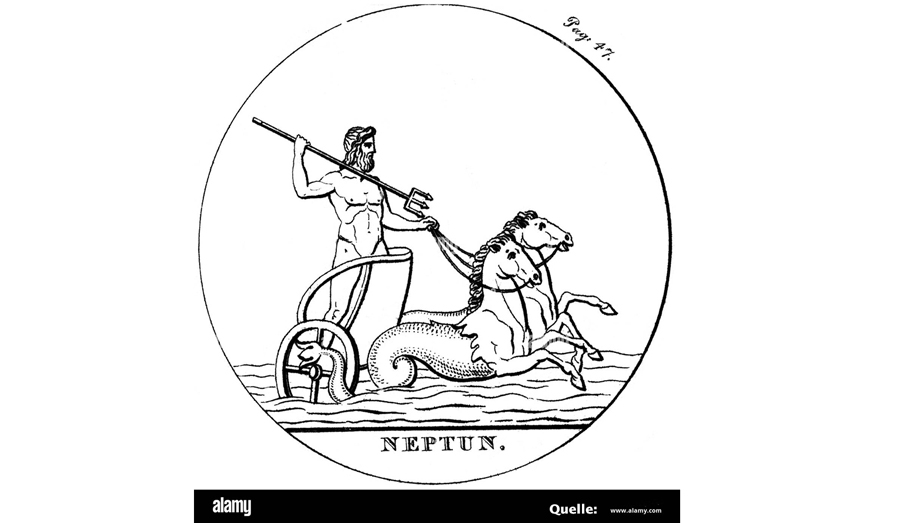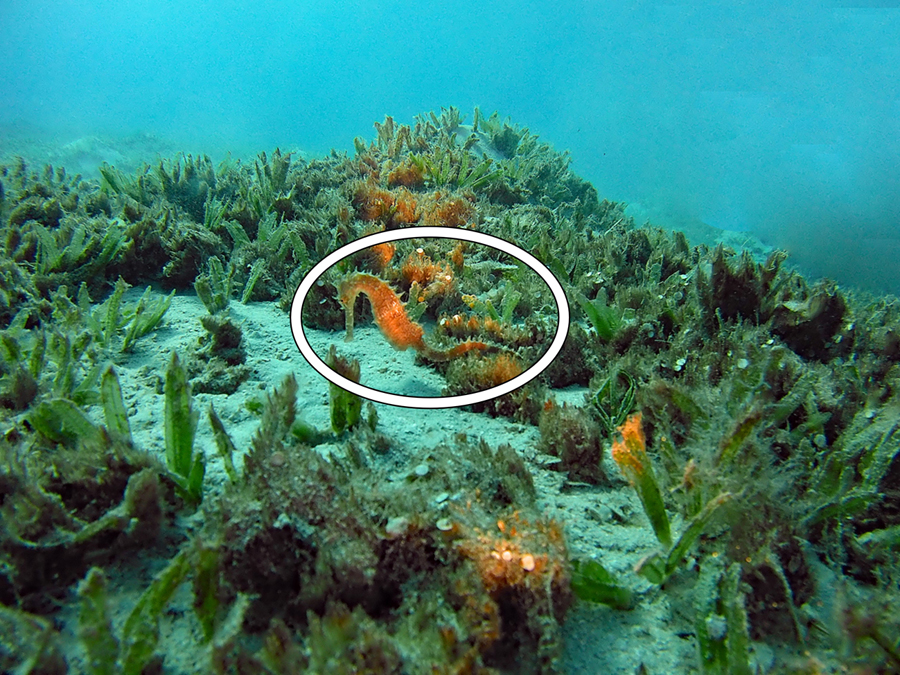SEAHORSE (HIPPOCAMOUS)

According to Greek mythology, seahorses are the descendants of the horse-like hippocampi that are said to have pulled the chariot of Poseidon, the god of the sea. The hippocamp is a mythical creature with the upper part of its body like a horse and the lower part like a fish. Its unique appearance has always inspired artists and fascinated marine biologists and us divers.
Seahorses are fish, although they don't look like fish at all. Like all fish, they have gills and a swim bladder. Seahorses live mainly in tropical waters. Their habitats are coral reefs, mangroves, estuaries or seagrass meadows. Around 80 species are known worldwide. There are no exact numbers, as biologists are constantly discovering new species. Typical for seahorses is the head, which resembles a horse's head. Instead of the tail fin typical of fish, the seahorse has a worm-like tail. They also have no scales, but a thin skin that stretches over bony plates arranged in a ring. Seahorses are poor swimmers. They move upright. To avoid drifting off, they cling to something with their prehensile tail and keep an eye out for prey. They feed on amphipods, shrimps and other tiny sea creatures. These are sucked in like lightning with the long tube-like snout, The size varies from 1 cm to around 30 cm. With their small size and good camouflage, seahorses are difficult to spot.
With a bit of luck and above all a trained eye, you can spot them in the seagrass meadows of our bay in Sahl Hasheesh.





